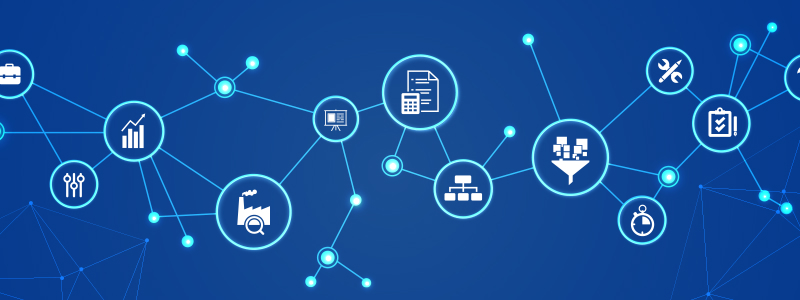
Revolutionizing Patient Data Management: How a US-based Insurance Company Saved more than $100,000 in Annual Costs
In the dynamic world of insurtech, where innovation is the key to success, insurance companies constantly seek ways to optimize their operations and unlock new opportunities. Among them, a US-based company, a renowned player in the industry, recognized the immense potential of automating their patient data management system. By embracing the power of an AI-driven tool, the company embarked on a journey of transformation, unlocking a wealth of benefits along the way.
Let’s explore how the insurance company in question seized the opportunity to save costs, boost operational efficiency, and gain a competitive edge, ultimately propelling them to the forefront of the ever-evolving insurance landscape.
Background of the Company
Over the past two decades, this company has been at the forefront of the insurance industry, catering to the needs of over 10,000 clients through an array of comprehensive insurance services. Their operations span across risk assessment, policy underwriting, claims management, and customer service, ensuring a holistic solution to their clients’ insurance needs. They’ve built a strong reputation based on their ability to provide customized insurance solutions while maintaining a high level of customer satisfaction. However, as the insurance landscape continues to evolve, so does the necessity for the company to innovate and enhance its operational efficiency.
The Challenge
Navigating the insurance landscape, the company found itself grappling with several challenges. Insurance, as an industry, is largely data-driven with decision-making heavily reliant on accurate and timely data. Medical records, in particular, contain crucial information that directly impacts the assessment of claims and policy underwriting.
With an average of 3,000 medical records to process each month, the sheer volume of data was proving to be overwhelming for the company. The intricacies of medical terminology and the need for precise extraction added another layer of complexity. In an industry where accuracy could significantly influence a claim’s outcome, even minor errors could lead to serious consequences.
In terms of costs, the financial burden of manual data extraction was staggering. With each medical record taking about 30 minutes to transcribe, this translated to over 1,500 hours of labor each month. Assuming an average wage of $15 per hour for data entry personnel, the cost of manual data extraction amounted to $22,500 per month, or a whopping $270,000 annually.
Additionally, the potential for human error introduced another cost factor. Even with a conservative error rate of 2%, this meant that 60 records each month required rework. With each error costing the company an additional $30 on average, this added up to $21,600 annually.
Furthermore, in an industry as competitive as insurance, the inability to promptly process claims due to slow data extraction could lead to customer dissatisfaction and a potential loss of business. This indirect cost, although harder to quantify, further underscored the urgent need for a more efficient data extraction solution.
It was clear that for the said Insurance company to stay competitive and cost-effective, a solution to automate the medical record data extraction process was essential. The chosen solution would need to address these industry-specific challenges and reduce the significant financial burden associated with manual data extraction.
Solution: Moving towards AI-driven Automation
Amidst data extraction challenges, Astera ReportMiner emerged as a transformational solution for the company, enhancing their patient data management system. This advanced software streamlined processes that once took hours into less than a minute, promising to transform the laborious task of processing 3,000 records per month.
For example, insurance claims often come with a myriad of supporting documents – doctors’ notes, lab results, medical invoices, and more. Each of these documents has its own format and key data points. ReportMiner’s AI Capture allowed the company to create report models with a single click. This enabled the extraction of essential data from varied documents swiftly, saving up to 80% of time and effort previously spent on manual layout creation.
Moreover, the company leveraged the tool to automatically identify and extract critical data points, such as patient names, procedure codes, and billed amounts from medical invoices. They were able to automate the extraction of critical data from medical invoices, automate the creation of tables for data analysis, and streamline their entire data pipeline. This not only improved the efficiency of their operations but also led to more accurate data, which in turn improved their decision-making capabilities.
Implementation
Shifting from manual data extraction to an automated process was a significant step for the company. The first step involved training a dedicated team on ReportMiner’s functionalities, including the use of AI Capture and the creation of extraction templates.
During the month-long transition process, manual and automated processes ran simultaneously to ensure service continuity. Despite initial challenges, the implementation was successful, and the company gradually reduced their dependence on the manual process by around 80%.
The implementation of ReportMiner and AI Capture led to a significant reduction in time and resources dedicated to data extraction. The software’s capability to process multiple files simultaneously meant that the task of processing 3,000 records per month became markedly more efficient, leading to quicker turnaround times and substantial cost savings.
The Impact of Astera ReportMiner
After implementation, the time taken to process each medical record dropped dramatically from 30 minutes to less than a minute, marking a 96% decrease in processing time and a reduction of $90,000 in annual costs.
Initially, with the manual process, the company faced a 2% error rate, which cost them $21,600 annually. After ReportMiner’s implementation, the error rate fell to less than 0.5%, dramatically minimizing the need for rework and further conserving time and resources. This reduced the company’s yearly costs by $16,200.
The savings weren’t only monetary but also extended to the valuable time of their employees, who could now focus on other critical tasks.
Conclusion
Astera ReportMiner, enhanced with its AI Capture feature, proved to be a game-changer for the aforementioned firm. The drastic reduction in processing time, coupled with a significant drop in error rates, meant that the company could maintain its commitment to delivering excellent customer service while also driving down operational costs. The implementation of ReportMiner not only helped streamline the data extraction process but also signified the organization’s successful stride into the future of automated data extraction.
Transform Your Data Extraction Process
Ready to revolutionize your data extraction process and unlock new efficiencies in your operations? It’s time to consider Astera ReportMiner.
Embrace the future of data extraction with Astera ReportMiner and experience the power of AI-driven automation. Contact us today to learn more about how Astera ReportMiner can revolutionize your data extraction process.
 NEW RELEASE ALERT
NEW RELEASE ALERT
 March 27th, 2025
March 27th, 2025 


